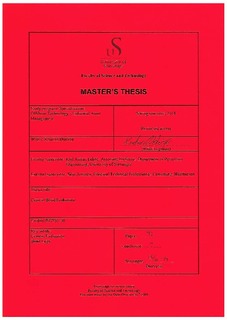| dc.contributor.author | Østerbø, Kristian | |
| dc.date.accessioned | 2015-01-12T09:34:00Z | |
| dc.date.available | 2015-01-12T09:34:00Z | |
| dc.date.issued | 2014-06-15 | |
| dc.identifier.uri | http://hdl.handle.net/11250/273919 | |
| dc.description | Master's thesis in Offshore technology : industrial Asset | nb_NO |
| dc.description.abstract | As part of completing an oil well strings of casing are inserted into a pre-drilled hole and cemented in place. The twofold purpose of the cement is to provide casing support and hydraulically isolate the annular space to avoid unwanted communication between zones. To establish whether or not a cemented interval meets given requirements, logging tools are run downhole to yield data that allow subsequent cement evaluation. In later years, however, many cement jobs executed according to best practices have been logged and deemed unsuccessful while further jobs done in the same way under similar well conditions have been judged differently, with no apparent logical explanation. Industry today does not know for sure whether the discrepancies are caused by job execution, cement as annular material, formation properties, or logging techniques. Cement that fail to be deemed as successful well barrier is a costly problem and effort should hence be allocated to find a solution.
This thesis has in co-operation with Halliburton approached the problem and investigated 38 jobs to look for patterns to explain discrepancies. The aim of the thesis is to look for trends which can help to pinpoint the root cause, if any. The thesis approach previous research together with common industry practice and employ the knowledge of both into a troubleshooting process including a statistical survey and case studies. The work has demonstrated the applicability of such statistical approach, but the sample size has to be of considerable size in order to cope with the complexity of the problem. Non-conventional slurry design and high density drilling fluids are found to continuously be involved in troublesome cases, but the sample size is considered to be too small for being conclusive. | nb_NO |
| dc.language.iso | eng | nb_NO |
| dc.publisher | University of Stavanger, Norway | nb_NO |
| dc.relation.ispartofseries | Masteroppgave/UIS-TN-IKM/2014; | |
| dc.rights | Attribution-NonCommercial-NoDerivs 3.0 Norway | * |
| dc.rights.uri | http://creativecommons.org/licenses/by-nc-nd/3.0/no/ | * |
| dc.subject | cement evaluation | nb_NO |
| dc.subject | bond logs | nb_NO |
| dc.subject | offshore teknologi | nb_NO |
| dc.subject | offshore teknologi | nb_NO |
| dc.subject | driftledelse | nb_NO |
| dc.title | Cement bond evaluation | nb_NO |
| dc.type | Master thesis | nb_NO |
| dc.subject.nsi | VDP::Technology: 500::Marine technology: 580::Offshore technology: 581 | nb_NO |

